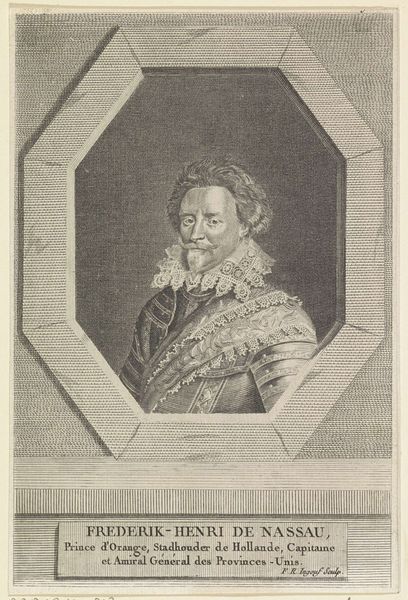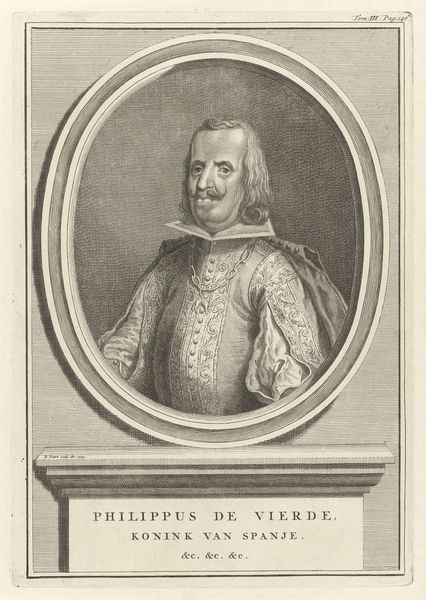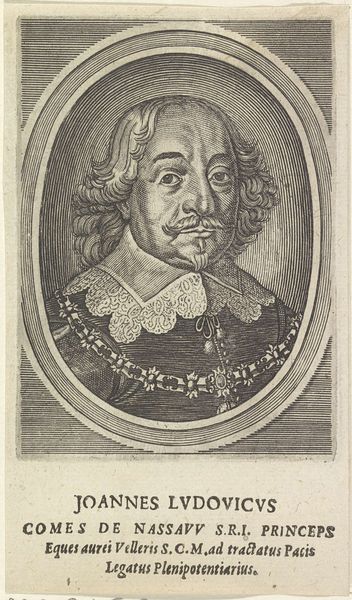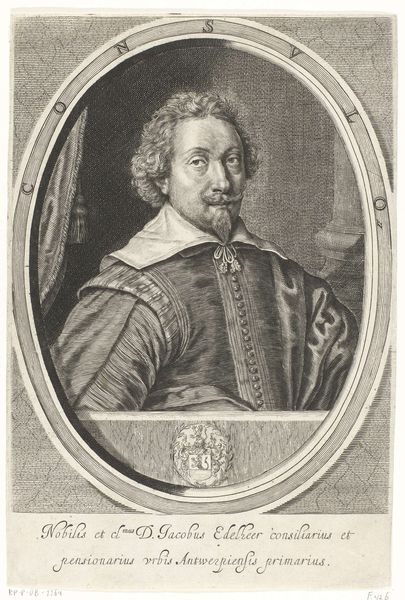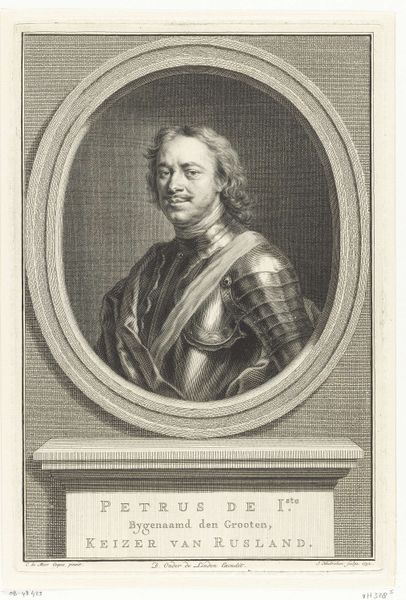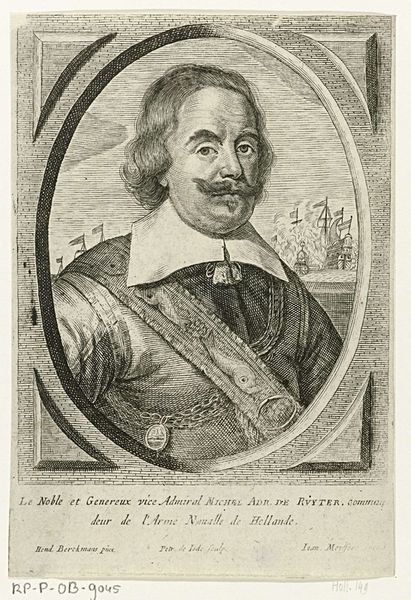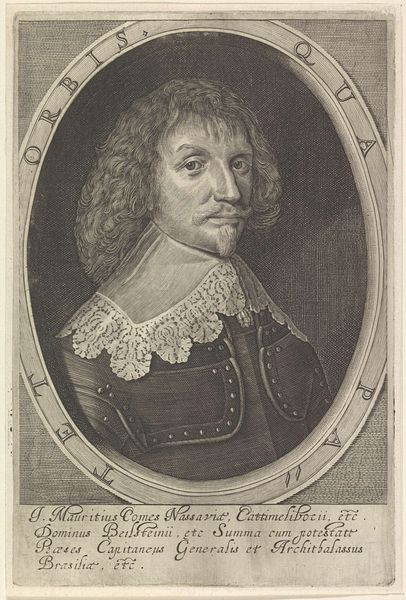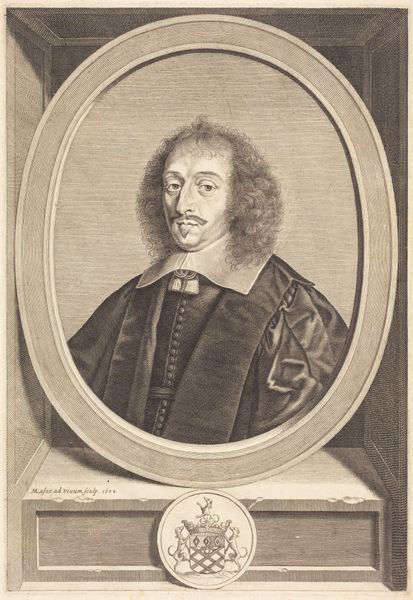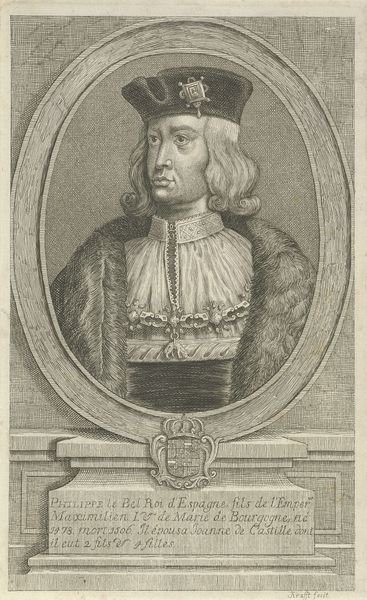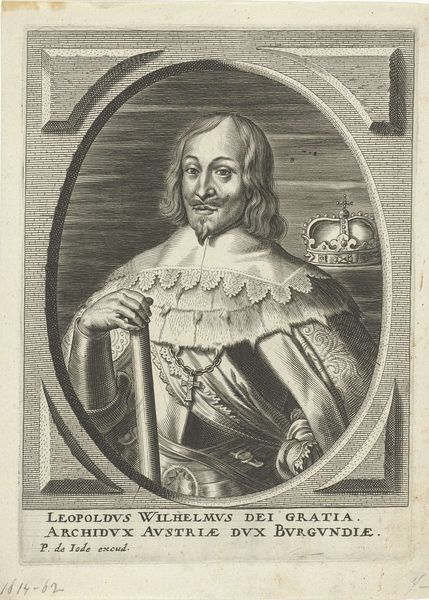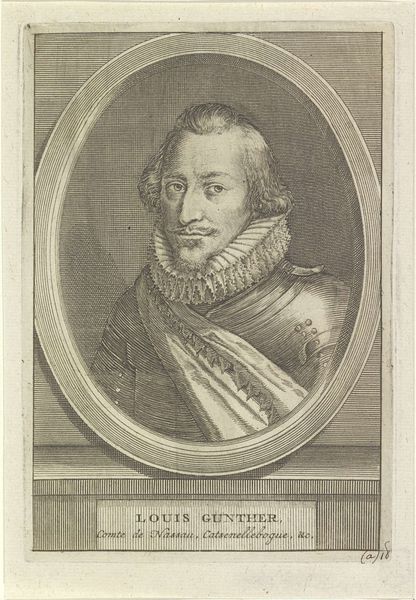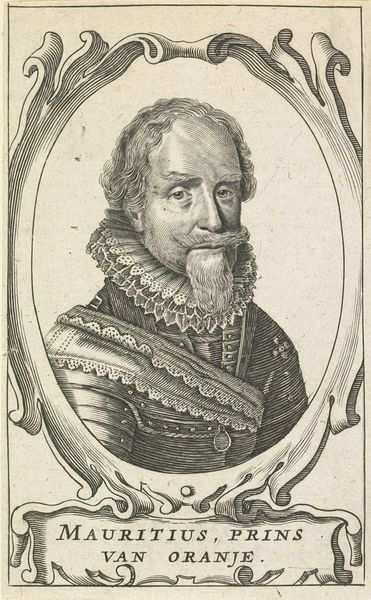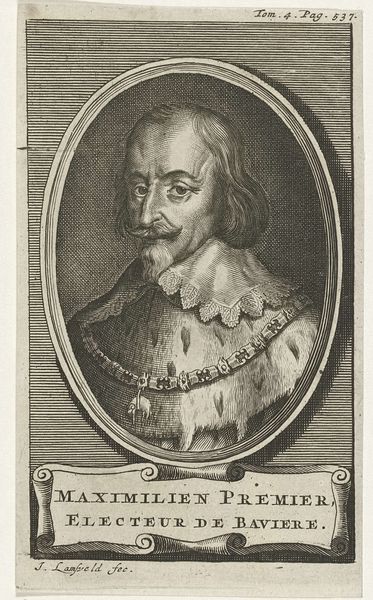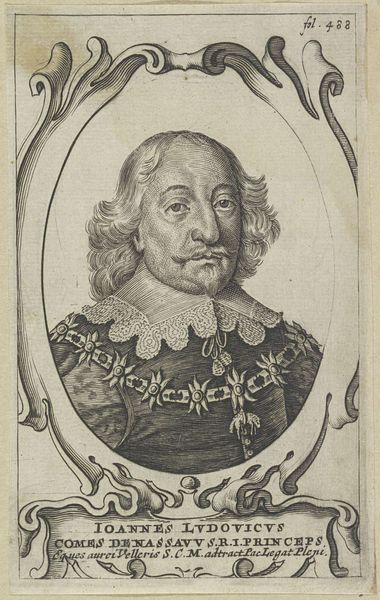
print, paper, engraving
#
portrait
#
baroque
# print
#
old engraving style
#
paper
#
history-painting
#
engraving
Dimensions: height 233 mm, width 163 mm
Copyright: Rijks Museum: Open Domain
Curator: Gazing at this print, the precision of the lines strikes me immediately. It's incredibly detailed. Editor: Indeed. We're looking at a portrait of Gaspar de Guzmán y Pimentel. The print was crafted between 1658 and 1669 by Giovanni Battista Bonacina, currently residing here at the Rijksmuseum. The work utilizes engraving techniques on paper. What do you read from it iconographically? Curator: Well, even the oval frame serves a symbolic purpose; it isolates and elevates the subject, suggesting importance and timelessness. His gaze, though direct, holds a certain weariness, or perhaps calculation. It speaks of a man burdened by responsibility, doesn't it? I find the details of his garment also interesting. Note the design; they signify not merely wealth but also status and perhaps a specific societal role within the Spanish court. Editor: Precisely. Guzmán was a significant figure, remember, involved in weighty political affairs. This portrait undoubtedly served to project power. The print medium itself underscores its public function. Multiple copies could be disseminated, shaping perception and solidifying his image. The way Bonacina has emphasized Guzmán’s attire contributes to this carefully crafted persona. It links directly to baroque aesthetics prevalent in monarchical representations. Curator: Absolutely. The seemingly minute decorative crosses, strategically placed upon the cloak. Symbolically reinforcing connections with royalty and nobility. Further enforcing Gaspar de Guzmán's status, by utilizing potent archetypes deeply entrenched in cultural consciousness. I wonder what feelings Bonacina was intending to generate from the observer, and to what extent these symbolic choices had upon that observer? Editor: Perhaps it was to encourage unwavering faith in the institution and instill within observers a belief in the enduring strength of Spanish governance? However, if those familiar with Gaspar de Guzmán would see the art work in an unintended and satirical sense? What effect might those contrasting perceptions have? That's something art allows that historical accounts may otherwise sanitize! Curator: Yes, art has that transformative ability, that ability to spark introspection, and further promote new social imaginings, whether reinforcing traditional authority, or offering some glimpse into an alternative narrative! Editor: True, studying an image such as this encourages an observer to reflect on that pivotal epoch while it provides insights, and challenges understandings!
Comments
No comments
Be the first to comment and join the conversation on the ultimate creative platform.
